 |
Convert DVD to MKV
|
DVD to MKV Converter Software converts DVD files to MKV. The converter
supports popular codecs for MKV file such as H.264, MPEG-4, Xvid, AAC, AC-3, MP2,
MP3, and Vorbis. The software could calculate bit rate for video according to
video size automatically.
The converter supports common media formats such as 3G2, SWF, iPhone, AMR, H.264, PPM image sequence, OGM, etc. It
could convert M4V to M4B (MPEG-4 audiobook), XVID to BMP image sequence, WMV to 3G2, MOV to FLAC, MPEG to VCD, and so on. In other words, the software is an ideal format
Converter Software for common uses.
DVD to MKV Converter Software supports batch conversion and, is full compatible
with Windows 10/8/7/Vista/XP/2000.

What is DVD?
DVD stands for Digital Versatile/Video Disc. A DVD holds a minimum of 4.7GB
of data, enough for a full-length movie. DVDs are commonly used as a medium
for digital representation of movies and other multimedia presentations
that combine sound with graphics. To record moving pictures, DVD-Video
uses either MPEG-2 compression at up to 9.8 Mbit/s (9,800 kbit/s) or MPEG-1
compression at up to 1.856 Mbit/s (1,856 kbit/s). The commercial DVD player
specification dictates that a player must only play discs that contain
its region code. Discs using the DVD-Video specification require a DVD
drive and a MPEG-2 decoder (e.g., a DVD player, or a computer DVD drive
with a software DVD player). DVD-Video discs respectively refer to properly
formatted and structured video content. It uses MPEG-2 for video compression,
with AC-3, DTS or MPEG audio for multi-channel audio support. Its main
uses are video and data storage. Most DVDs are of the same dimensions as
compact discs (CDs) but store more than six times as much data. VOB files
are a very strict subset of the MPEG program stream standard. Subtitles
are usually intended as a visual help for the deaf and hearing impaired
and for translating dialogs. DTS audio is optional for all players, as
DTS was not part of the initial draft standard and was added later; thus,
many early players are unable to play DTS audio tracks. Professionally
encoded videos average a bitrate of 4-5 Mbit/s with a maximum of 7-8 Mbit/s
in high-action scenes. This is typically done to allow greater compatibility
amongst players, and to help prevent buffer underruns in the case of dirty
or scratched discs. DVD-Video discs have a raw bitrate of 11.08 Mbit/s,
with a 1.0 Mbit/s overhead, leaving a payload bitrate of 10.08 Mbit/s.
Of this, up to 3.36 Mbit/s can be used for subtitles and a maximum of 9.80
Mbit/s can be split amongst audio and video.
What is MKV?
Matroska video files have the ".mkv" file extension, causing
them to sometimes be referred to as MKV files. Its main features include
fast seeking, high error recovery, modularly extendable, selectable subtitle
and audio streams, chapter entries, menus, and streamable over the internet.
An example of a Matroska file is a complete video file that includes a
video stream and an audio stream, as well as subtitles and a menu system.
Matroska aims to become THE standard of multimedia
container formats. EBML enables the Matroska Development Team to gain significant
advantages in terms of future format extensibility, without breaking file
support in old parsers. The Matroska name and logo use do have some restrictions
based on the specific circumstances. It was derived from a project called
MCF, but differentiates from it significantly because it is based on EBML
(Extensible Binary Meta Language), a binary derivative of XML. Matroska
file extensions are .MKV for video (with subtitles and audio), .MK3D for
stereoscopic video, .MKA for audio-only files, and .MKS for subtitles only.
The name "Matroska" is derived from the Russian word Matryoshka,
which means nesting doll (the common Russian cylindrical-shaped doll within
a doll, also known as a babushka doll). This is a play on the container
(media within a form of media/doll within a doll) aspect of the matryoshka
as it is a container for visual and audio data. MKV (Matroska) is an open
source format based on EBML (Extensible Binary Meta Language), and includes
a greater number of features than supported by other container formats
used in industry.
How to Convert DVD to MKV?
- Free Download DVD to MKV Converter
Software
- Install the Program by Step-by-step Instructions
- Launch DVD to MKV Converter Software
- Choose DVD Location
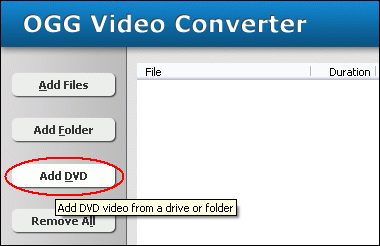
Click "Add DVD" to select DVD location.
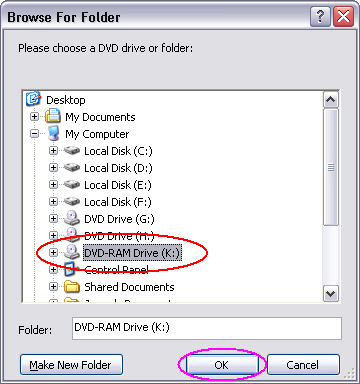
Select DVD location such as DVD drive or a folder that DVD data has been copied
to, and then click OK. DVD to MKV Converter Software will open DVD
title and get file information of the file such as width, height, frame rate,
video bit rate, audio sample rate, audio bit rate, audio channels, and then display
the information of DVD file at conversion list.

- Choose Output Format
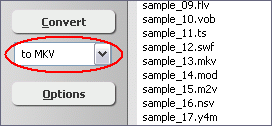
Click on combo box of output format and then choose "to MKV".
- [Optional, for advanced user]
Set MKV Encoding Parameters
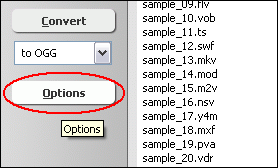
If you want to change MKV encoding parameters such as bit rate, frame rate, video
size, and aspect ratio, please click "Options".
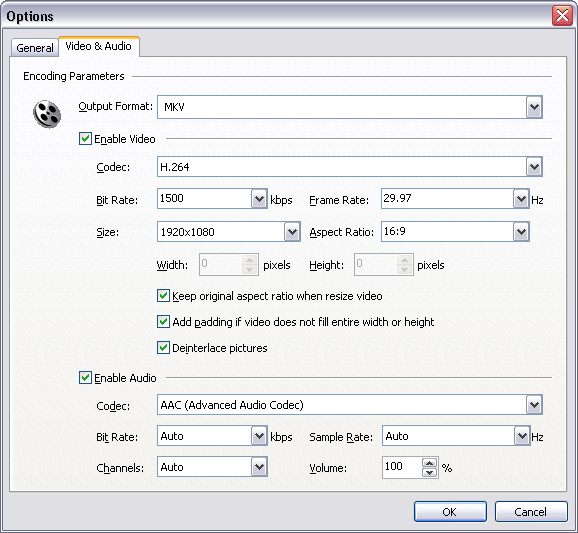
And then, switch to tab "Video & Audio" and choose "MKV"
at "Output Format", and then set options for video and audio
encoding.
- Convert DVD to MKV
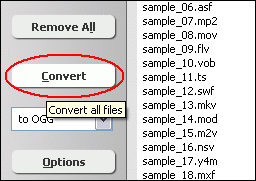
Click "Convert" to convert all DVD files in list to MKV format.

The software is converting DVD files to MKV.
- Play and Browse MKV File
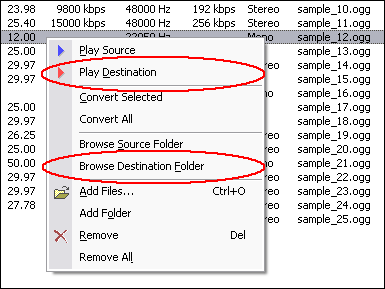
When conversion completes, you can right-click converted item and choose "Play
Destination" to play the outputted MKV file; or choose "Browse Destination
Folder" to open Windows Explorer to browse the outputted MKV file.
- Done
Top
DVD to MKV Converter Software is 100% clean and safe to
install. It's certified by major download sites.

Convert DVD to MKV Related Topics:
|











